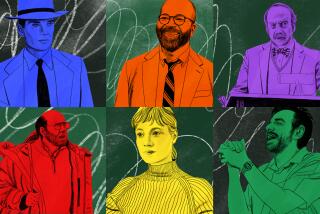There’s teaching, and there’s learning
I can’t recall my fourth-grade teacher’s name. Mrs. Klatt? Miss Klapp? What I remember about her is that she had naturally curly hair, which I envied, and that she let us play “Heads-up, Seven-up” on rainy days when we had to stay in for recess.
What we studied that year? Beats me.
My fifth-grade teacher, Mrs. Gibbs — Mrs. Evelyn Gibbs — was nearing retirement age, and there was nothing about her appearance I envied. She was a stickler for classroom decorum, and she didn’t tolerate messy desks, which posed a particular problem for me. That said, I remember an enormous amount from my year with her.
Mrs. Gibbs had recently visited Asia, so we learned about Japan. We wrote haiku, which we illustrated with bamboo brushes and ink. We performed a tea ceremony. After that, she had us interview our parents and grandparents about our own origins and bring in something from our families’ cultural pasts.
After a playground argument over what kind of tree grew outside our classroom, Mrs. Gibbs plucked a leaf and told us to examine it. We looked at it through a magnifying glass and under a microscope. She brought in books about trees, and we tentatively decided ours was a sycamore. Then she invited a local nursery owner who confirmed our identification and taught us to recognize other common trees in the area. That led to a unit on why trees are green. We learned about chlorophyll and photosynthesis, and we each pressed leaves and put them in notebooks to document the trees in our neighborhoods.
One week, our spelling list included the word “typewriter.” Mrs. Gibbs wouldn’t tell us how to spell it, but she said she’d give extra credit to any student who found the typewriter store in town that misspelled the word on its sign. Most of the kids in the class spent that night poring over the phone book to locate typewriter stores and begging their parents to drive them around town. Some of us found the sign at Cook’s Typwriter. I’ll never forget that the word has that second “e” in it.
I don’t know how Mrs. Gibbs would stack up against my fourth-grade teacher in terms of her students’ performance on standardized tests. Some of the things we learned in fifth grade — how to approach scientific inquiry, the notion that learning is fun, an appreciation of cultural differences — can’t be measured that way. But I do know that what I learned in fifth grade shaped me as a student.
I thought about my two teachers while reading my colleagues’ work in this paper last weekend. Jason Song, Jason Felch and Doug Smith analyzed test scores to see which of the teachers in the Los Angeles Unified School District consistently raised the scores of their students — and which ones saw students in their classes fall behind. In the days since that story ran, some educators have condemned the project, saying the scores can’t measure the value of a teacher.
It’s true that there are important things that happen in classrooms that aren’t measured by annual tests. But that doesn’t mean the scores aren’t important. California, like most states, sets standards for each grade, benchmarks that educators and officials have identified as crucial for students to hit if they are going to remain on track as they advance through the grades. If students don’t master fractions in the primary grades, they are unlikely to be ready for algebra in middle school. Testing can tell us whether students have learned the essentials and are ready to move on to the next rung of the ladder.
Up to now, unfortunately, test scores haven’t been properly analyzed. School districts and individual schools are held up for admiration or scorn because of their test scores, but as we all know, students from middle-class homes with educated parents tend to do much better than students without those advantages. So it’s easy to dismiss test scores in the aggregate as saying more about a school’s socioeconomic makeup than about good teaching.
School officials, in part because of intense resistance from teachers unions, have been reluctant to scrutinize the role of individual teachers in raising or lowering scores. The LAUSD has had the ability to do the kind of “value-added” analysis performed by my colleagues for some time, and it hasn’t done it. Now it’s been done for it, and we have to hope district officials will study what the numbers have to say.
So much of learning, and of excellent teaching, involves intangible things that happen during the school day, interactions between students and teachers that defy quantification. But if the data we have show us that some teachers in a public school system are far better than others at helping kids master the essentials, the public should know that, and the system should study what those teachers are doing right.
And then, once we realize how much such assessments can tell us, perhaps we’ll develop a way to measure the equally important but less tangible kind of learning that comes from a tea ceremony.
Sue Horton is Op-Ed editor at The Times.
More to Read
Start your day right
Sign up for Essential California for news, features and recommendations from the L.A. Times and beyond in your inbox six days a week.
You may occasionally receive promotional content from the Los Angeles Times.







